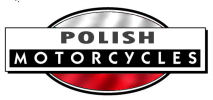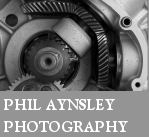




Overview
The company was established in 1904 to built marine and industrial engines at Grochowska Street 309-317, Warsaw.
Motorcycles were manufactured 1938-1939
Based on designs of the Baker and Excelsior motorcycles from Britain, these were powered by 98cc Villiers engines built under licence, with 125cc engines optional. The firm also produced three-wheel commercial vehicles based on their motorcycles. Plans were afoot to build larger machines and an agreement with Panther had been entered, but then war broke out.
Perkun History
In 1904, Towarzystwo Fabryki Motorów "Perkun" SA was established in Warsaw. The plant occupied extensive areas at ul. Grochowska (properties 309-317) and employed - as of 1938 - several hundred employees. The production program included low and medium power internal combustion engines, especially diesel engines, for industrial, agricultural and shipping purposes. Particularly popular were the 40 HP diesel engines for fishing boats.
In 1936, design work on a light motorcycle, i.e. a vehicle designed for really cheap, mass motorization, began in the factory's design office. At the end of July or beginning of August 1938, the first series of motorcycles, named after the factory, was launched. "Perkunas" were equipped with reliable, small capacity engines from the English company Villiers, but the ambition of the plant's management was to produce entirely its own vehicles. In the fall of 1938, a modern two-stroke engine with a displacement of 125 cc was readyand power of 4 hp, at 4200 rpm, locked with a gearbox with three ratios and, unlike the previous imported model, foot-operated. The engine was made of domestic materials. Of foreign origin - also in serial engines - there were only two elements: a carburetor (of the well-known German brand Graetzin) and a generator built under the flywheel (a product of the German company Noris, famous for its high-quality products). The engine had battery ignition (6V, 7Ah battery), and the ignition coil, breaker, voltage regulator and battery charging indicator were placed in the generator housing.
A version with a Polish power unit was scheduled for production at the beginning of the next year, with three prototypes reportedly undergoing tests as early as the second half of 1938.
The fate of these interesting plans is not known yet, but a "Perkuny 125" appeared in test copies supposedly in the first months of 1939. According to information from one of the then automotive magazines, the intention was to produce 1,500 of these vehicles annually.
It was planned that the 98 and 125cc motorcycles would have common elements of the chassis and equipment, of which the following are worth mentioning: tubular frame, trapezoidal pressed metal front fork, wheels with internal expanding brakes fitted with "Polskie Tyre Stomil" with dimensions of 3.00 x 19", and an 11 litre petrol tank.
The Perkuny machine had a simple but strong and rational design, and their operation was not problematical. An interesting feature of the 125 model was the external adjustment of the clutch with a large round nut with "grooved" edges, and in the 98 model - the parking lighting solution - with the engine off, the power source for the additional (front and rear) 3.5 - volt bulbs was a dry battery, placed in the reflector housing or (less often) in a special container.
"Perkun" 98, as the first mass-produced domestic, Setki (hundred) was inexpensive, economical and quite durable. It was well-received by motorcyclists and the press. An additional advantage increasing the attractiveness of motorcycles of this class was the fact that their users were not required to have a rider's license. Buyers of "Perkunów", as well as all vehicles of domestic production, benefited from a significant discount - reimbursement of the value of the motorcycle from road tax payments.
Delivery carts manufactured by "Perkuna" could be attached to the motorcycle. There was also a three-wheel cargo version. The delivery truck placed at the front had independent suspension of both wheels on coil springs and a box measuring 80 x 100 cm, allowing quite large loads to be transported. Noteworthy is the ease of disassembly of the power source (the "Perkun" 98 motorcycle), which allowed the tricycle converted from a small truck to a solo touring motorcycle.
In the table below the distinguishing features of the 125 are in parentheses.
| Specifications | ||||
|---|---|---|---|---|
| Engine: | single-cylinder, two-stroke, chain drive to the rear wheel | |||
| Bore x stroke / displacement: | 50x50mm/98cc (52x58.8mm/124.9cc) | |||
| Power: | 3 hp, (4 hp at 4200 rpm) | |||
| Clutch: | wet, multi-disc | |||
| Transmission: | three-speed, manually controlled (foot controlled) | |||
| Ignition: | magneto (battery) | |||
| Generator: | magneto Villires 6V 18W. Dry battery - 3.5V for parking lights. (Noris 6V 25W. Battery 6V 7Ah) | |||
| Frame: | tubular, single, closed | |||
| Front suspension: | trapezoidal fork | |||
| Rear Suspension: | rigid | |||
| tyres: | Polish Tyre Stomil 3.00 x 19" | |||
| Length Width Height: | 1950/670/940mm | |||
Sources: